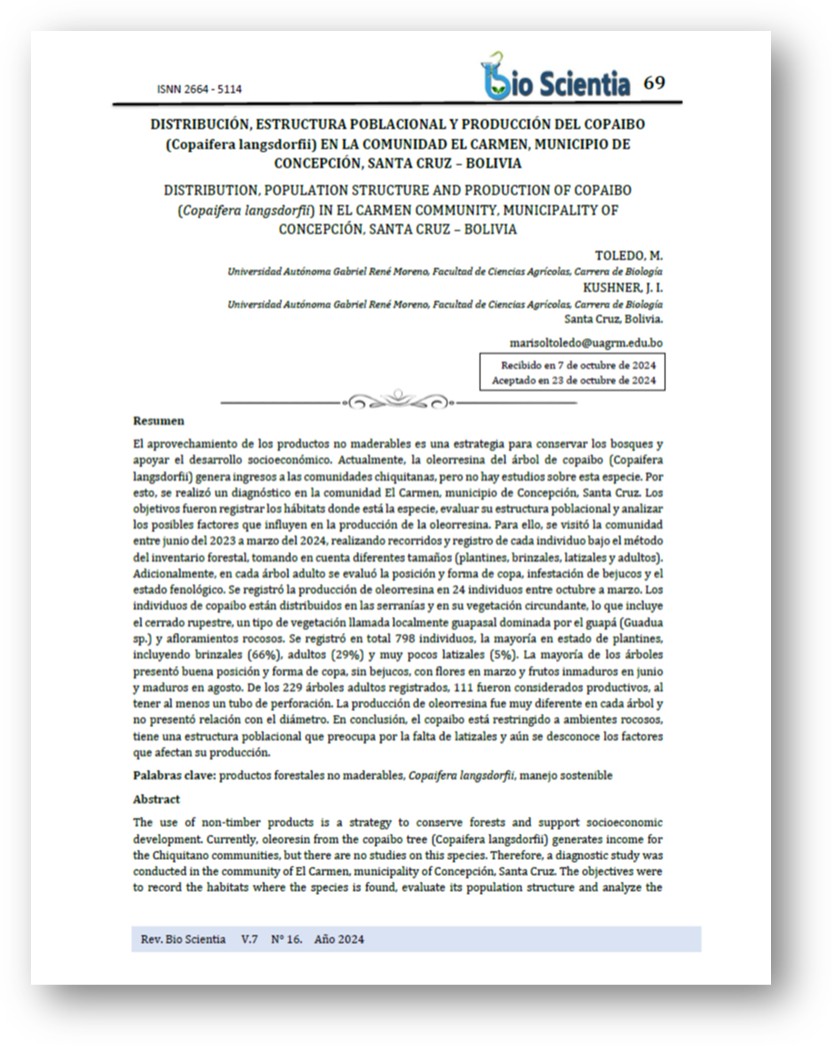DISTRIBUTION, POPULATION STRUCTURE AND PRODUCTION OF COPAIBO (Copaifera langsdorfii) IN EL CARMEN COMMUNITY, MUNICIPALITY OF CONCEPCIÓN, SANTA CRUZ – BOLIVIA
Keywords:
non-timber forest products, Copaifera langsdorfii, sustainable managementAbstract
The use of non-timber products is a strategy to conserve forests and support socioeconomic development. Currently, oleoresin from the copaibo tree (Copaifera langsdorfii) generates income for the Chiquitano communities, but there are no studies on this species. Therefore, a diagnostic study was conducted in the community of El Carmen, municipality of Concepción, Santa Cruz. The objectives were to record the habitats where the species is found, evaluate its population structure and analyze the possible factors that influence oleoresin production. To do this, the community was visited between June 2023 and March 2024, conducting tours and recording each individual under the forest inventory method, taking into account different sizes (seedlings, saplings, saplings and adults). In addition, the position and shape of the crown, infestation of vines and the phenological state of each adult tree were evaluated. Oleoresin production was recorded in 24 individuals between October and March. The copaibo individuals are distributed in the highlands and surrounding vegetation, including the cerrado rupestre, a type of vegetation locally called guapasal dominated by guapá (Guadua sp.) and rocky outcrops. A total of 798 individuals were recorded, most of them in seedling stage, including saplings (66%), adults (29%) and very few saplings (5%). Most of the trees presented good position and crown shape, without lianas, with flowers in March and immature fruit in June and mature fruit in August. Of the 229 adult trees recorded, 111 were considered productive, having at least one perforation tube. Oleoresin production was very different in each tree and was not related to diameter. In conclusion, copaibo is restricted to rocky environments, has a population structure that is of concern due to the lack of latizales and the factors that affect its production are still unknown.



